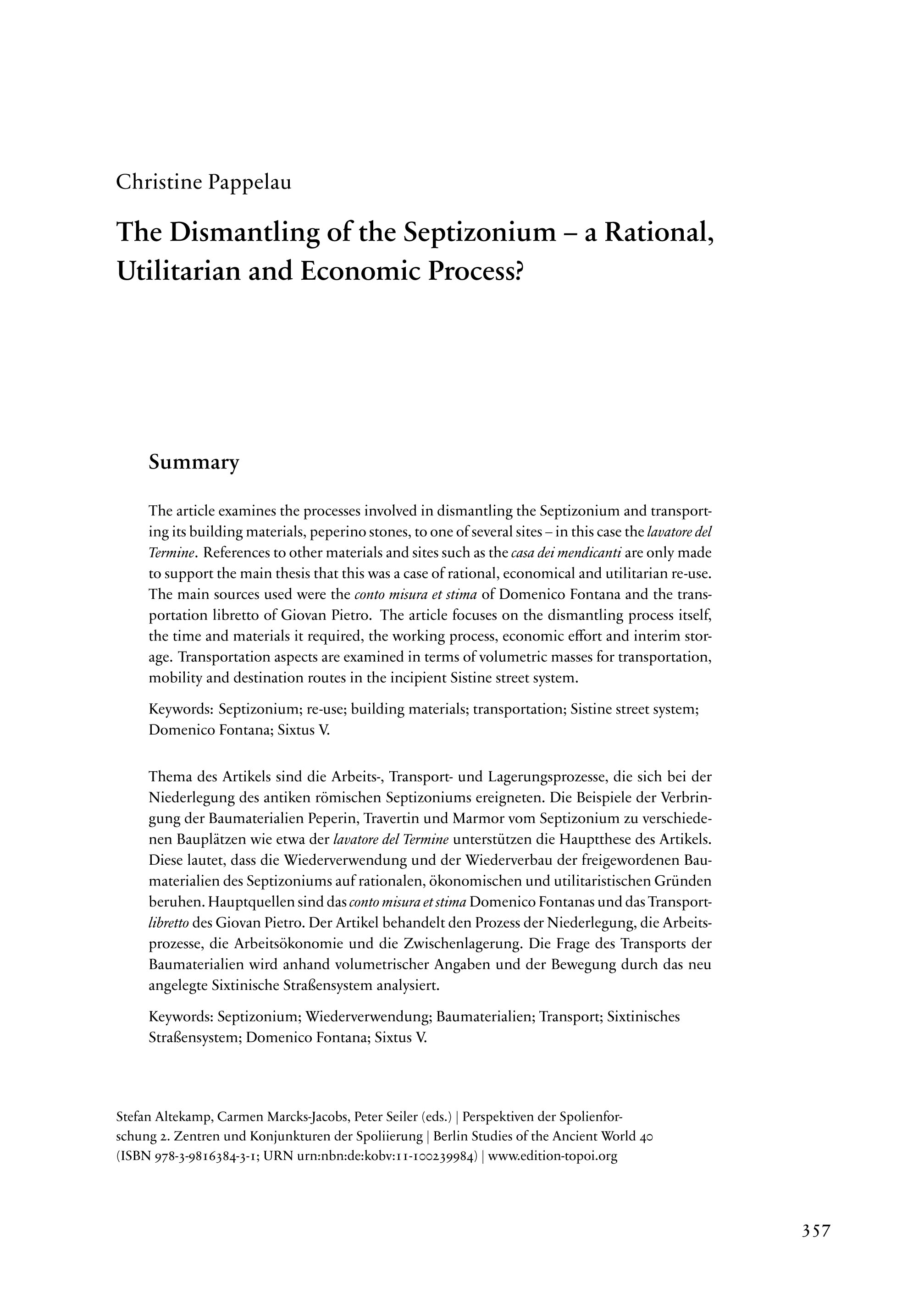The Dismantling of the Septizonium – a Rational, Utilitarian and Economic Process?
The article examines the processes involved in dismantling the Septizonium and transporting its building materials, peperino stones, to one of several sites – in this case the lavatore del Termine. References to other materials and sites such as the casa dei mendicanti are only made to support the main thesis that this was a case of rational, economical and utilitarian re-use. The main sources used were the conto misura et stima of Domenico Fontana and the transportation libretto of Giovan Pietro. The article focuses on the dismantling process itself, the time and materials it required, the working process, economic effort and interim storage. Transportation aspects are examined in terms of volumetric masses for transportation, mobility and destination routes in the incipient Sistine street system.
Thema des Artikels sind die Arbeits-, Transport- und Lagerungsprozesse, die sich bei der Niederlegung des antiken römischen Septizoniums ereigneten. Die Beispiele der Verbringung der Baumaterialien Peperin, Travertin und Marmor vom Septizonium zu verschiedenen Bauplätzen wie etwa der lavatore del Termine unterstützen die Hauptthese des Artikels. Diese lautet, dass die Wiederverwendung und der Wiederverbau der freigewordenen Baumaterialien des Septizoniums auf rationalen, ökonomischen und utilitaristischen Gründen beruhen. Hauptquellen sind das conto misura et stima Domenico Fontanas und das Transport-libretto des Giovan Pietro. Der Artikel behandelt den Prozess der Niederlegung, die Arbeitsprozesse, die Arbeitsökonomie und die Zwischenlagerung. Die Frage des Transports der Baumaterialien wird anhand volumetrischer Angaben und der Bewegung durch das neu angelegte Sixtinische Straßensystem analysiert.

